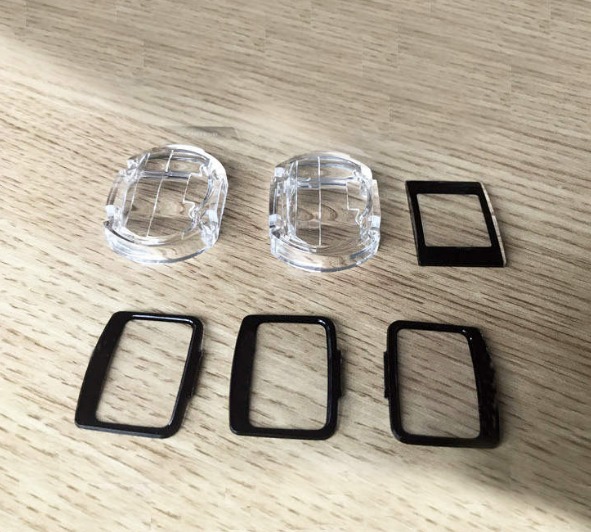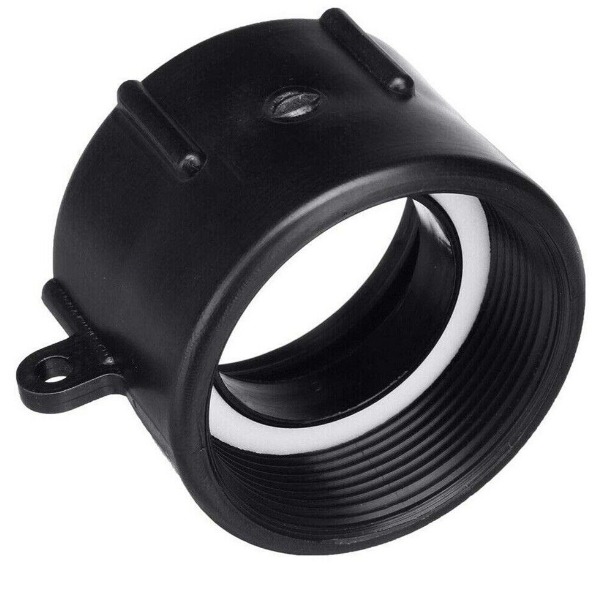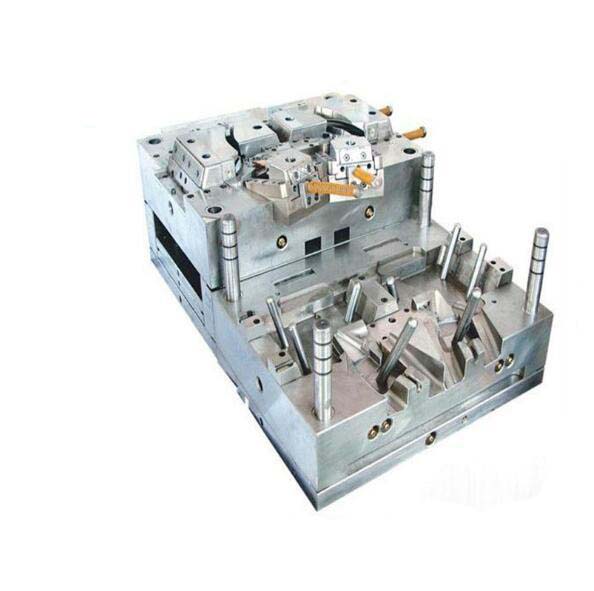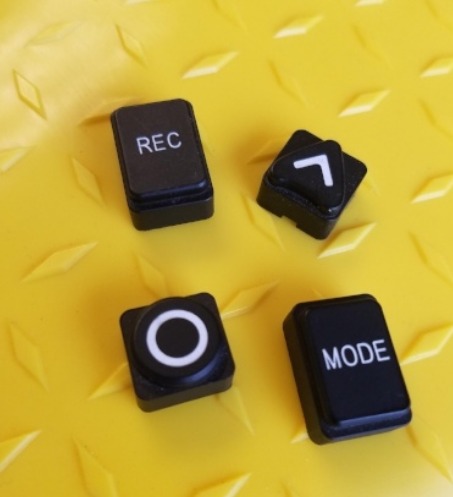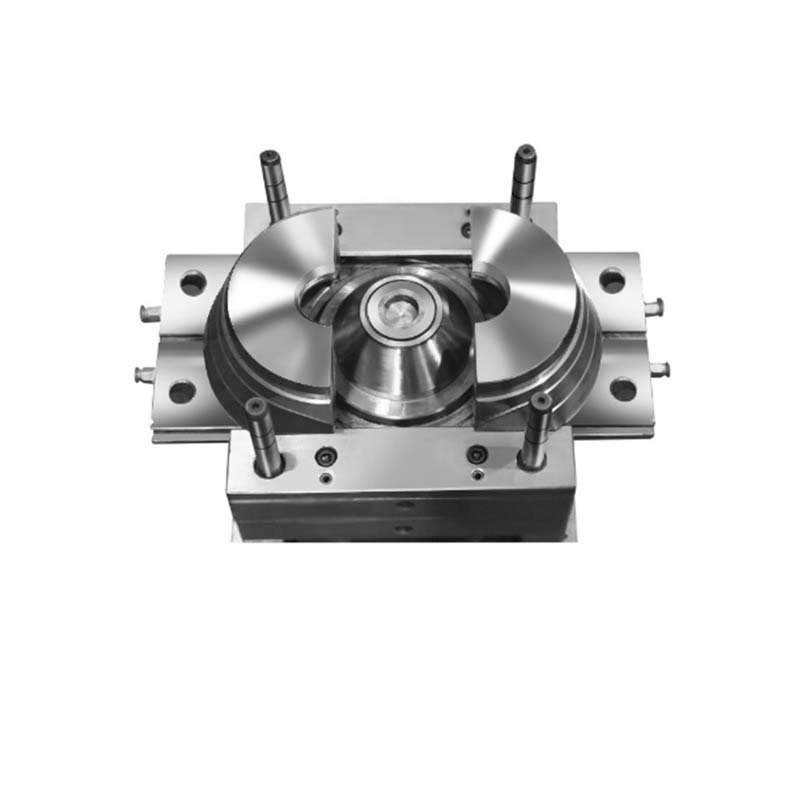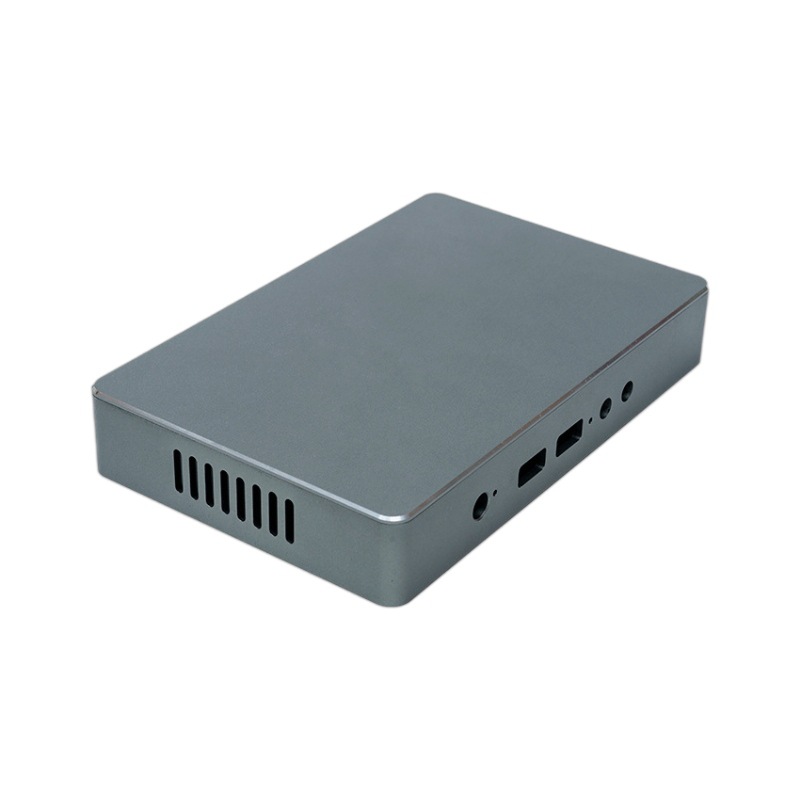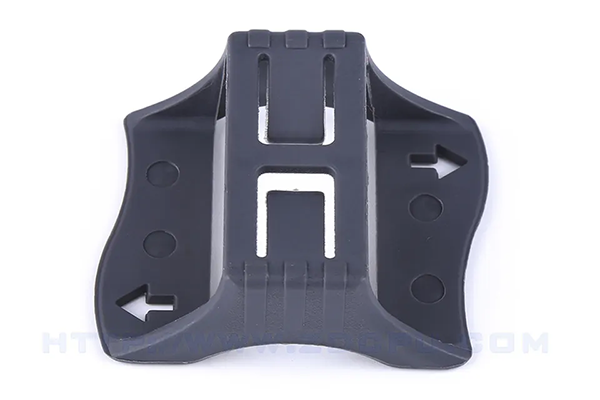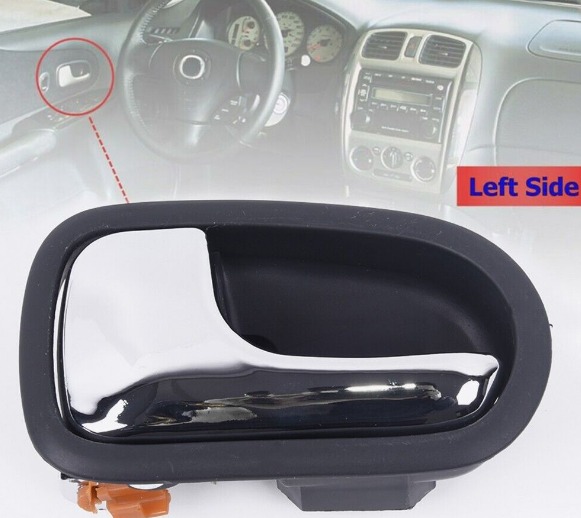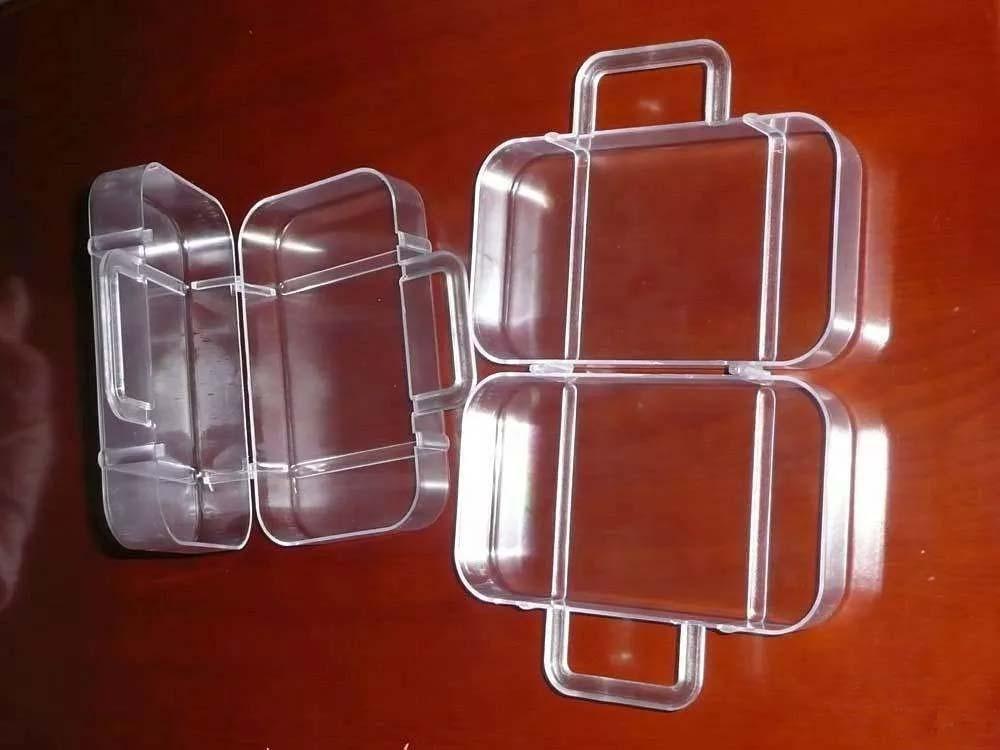Introduction
Definition and Basic Principle
Barrel injection moulding, also known as barrel molding, is a manufacturing process that plays a crucial role in the production of various plastic products. It involves the creation of plastic barrels or containers through a highly efficient and precise injection - moulding technique.
The basic principle of barrel injection moulding starts with the raw material, which is typically plastic pellets. These pellets are fed into a hopper and then conveyed into a heated barrel within the injection - moulding machine. Inside the barrel, the plastic pellets are subjected to high temperatures, usually ranging from 180°C to 300°C, depending on the type of plastic. As the temperature rises, the plastic pellets gradually melt and transform into a viscous, molten state.
Once the plastic has reached the desired molten state, a reciprocating screw, which is an integral part of the injection - moulding machine, comes into action. The screw rotates and pushes the molten plastic forward, building up pressure. This high - pressure molten plastic is then forcefully injected into a pre - designed metal mould cavity that has the shape of the desired barrel. The injection pressure can vary widely, from 500 to 2000 bar, depending on factors such as the complexity of the barrel design, the size of the barrel, and the type of plastic being used.
Key Components in Barrel Injection Moulding
Injection Moulding Machine
Structure and Function
The injection moulding machine is the heart of the barrel injection moulding process. It consists of several key components, each with its unique function.
Screw: The screw is a crucial part of the injection - moulding machine. It rotates within the barrel and serves multiple functions. First, it conveys the plastic pellets from the hopper into the heated section of the barrel. As it rotates, the screw also compresses and shears the plastic, which helps in the plasticization process. For example, in a typical medium - sized injection - moulding machine used for producing common plastic barrels, the screw has a diameter of around 40 - 60 mm and rotates at speeds ranging from 50 - 200 revolutions per minute. This rotation speed can be adjusted based on the type of plastic and the desired production rate.
Barrel: The barrel is a long, cylindrical chamber where the plastic pellets are heated and melted. It is usually made of high - quality steel that can withstand high temperatures and pressures. Electric heating bands or cartridges are wrapped around the barrel to provide the necessary heat for melting the plastic. The barrel is divided into multiple temperature zones, typically three to five zones. For instance, in the first zone near the hopper, the temperature might be set around 180 - 200°C to start the softening of the plastic pellets. As the plastic moves further along the barrel towards the injection end, the temperature in the last zone could be around 250 - 300°C to ensure complete melting.
Injection Device: The injection device is responsible for injecting the molten plastic into the mould cavity. It includes components such as the injection cylinder, piston, and nozzle. When the plastic is fully melted and plasticized, the injection cylinder exerts high pressure on the piston, which then forces the molten plastic through the nozzle and into the mould. The injection pressure can vary significantly. For large - scale barrel production, the injection pressure might reach up to 1500 - 2000 bar to ensure that the molten plastic fills the large and sometimes complex - shaped mould cavities completely.
Types and Their Advantages
There are mainly two types of injection moulding machines commonly used in barrel injection moulding: screw - type and plunger - type.
| Type | Advantages | Disadvantages | Suitable for |
| Screw - type | 1. Excellent plasticization: The rotation of the screw provides better mixing and plasticization of the plastic, resulting in more uniform melting. For example, when processing high - density polyethylene (HDPE) for barrel production, the screw - type machine can ensure that the HDPE pellets are evenly melted, reducing the risk of defects in the final product.2. Higher injection speed: It can achieve faster injection rates, which is beneficial for high - volume production. In a high - volume barrel manufacturing plant, a screw - type injection - moulding machine can produce hundreds of barrels per hour.3. Precise control: Allows for more precise control over the injection process, such as injection pressure, speed, and volume, which is crucial for producing barrels with consistent quality. | Higher initial cost compared to plunger - type machines | Most common barrel injection moulding applications, especially for high - volume production of standard plastic barrels |
| Plunger - type | 1. Simple structure: Has a relatively simple mechanical structure, which can be easier to maintain in some cases. For small - scale manufacturers with limited technical resources, the simplicity of the plunger - type machine can be an advantage.2. Good for high - viscosity plastics: Is more suitable for processing plastics with high viscosity as it can generate high pressure without the complex rotation mechanism of the screw. Some specialty plastics used in certain barrel applications with high viscosity can be better processed with a plunger - type machine | 1. Inconsistent plasticization: The plasticization is not as uniform as that of screw - type machines, which may lead to product defects. 2. Lower injection speed: Generally has a lower injection speed, which can limit production efficiency | Small - scale production or for processing high - viscosity plastics where precise plasticization is not as critical |
Moulds
Design Considerations
The design of the mould is of utmost importance as it directly impacts the quality of the plastic barrels produced.
Product Shape: The shape of the barrel, whether it is a simple cylindrical shape or has complex features such as handles, ribs, or threaded necks, must be carefully considered during mould design. For example, if a barrel has a handle, the mould design needs to incorporate a mechanism for creating the handle cavity and ensuring proper filling of plastic into that area. Complex shapes may require additional features like side - action mechanisms (such as slides or lifters) to create undercuts or other intricate details.
Size Precision: The mould must be designed to achieve the required size precision of the barrel. Tolerances for barrel dimensions can be very tight, especially for applications where the barrel needs to fit specific equipment or storage systems. For example, a barrel used in a chemical storage system may have a diameter tolerance of ±0.5 mm. The mould design should account for factors such as plastic shrinkage during cooling, which can vary depending on the type of plastic used. High - density polyethylene (HDPE) typically has a shrinkage rate of around 1.5 - 3%, so the mould cavity needs to be designed slightly larger than the final desired barrel size to compensate for this shrinkage.
Materials Selection
The choice of materials for mould manufacturing significantly affects the mould's lifespan and production costs. Steel is the most commonly used material for moulds in barrel injection moulding.
Steel Grades and Their Properties:
- P20 Steel: P20 steel is a pre - hardened tool steel with a hardness of around 30 - 35 HRC. It has good machinability, which means it can be easily shaped into the desired mould cavity using machining processes such as milling, drilling, and EDM (electrical discharge machining). It is suitable for producing moulds for medium - volume production of plastic barrels. For example, if you plan to produce 50,000 - 100,000 barrels, P20 steel can be a cost - effective choice. However, its wear resistance is moderate, so it may not be the best option for high - volume production or when processing abrasive plastics.
- 718 Steel: 718 steel is an upgraded version of P20 steel. It has a higher hardness, typically around 35 - 40 HRC, and better wear resistance. It is more suitable for high - volume production runs, say for producing 100,000 - 500,000 barrels. The improved wear resistance means that the mould will maintain its dimensional accuracy for a longer time, reducing the need for frequent mould repairs or replacements. This can result in cost savings in the long run, especially for large - scale barrel manufacturers.
- NAK80 Steel: NAK80 steel is a high - quality pre - hardened steel known for its excellent mirror - polishing properties. It can achieve a very smooth surface finish, which is crucial for producing barrels with high - gloss or optical - quality surfaces. Although it is more expensive than P20 and 718 steel, it is the material of choice when the barrel requires a high - quality surface appearance, such as for cosmetic or luxury product packaging barrels.
Process Steps of Barrel Injection Moulding
Plastic Melting
Temperature Control
Temperature control is of utmost importance during the plastic melting process in barrel injection moulding. Different types of plastics have significantly different melting points. For example, polyethylene (PE) has a melting point in the range of 105 - 135°C, while polypropylene (PP) melts at around 160 - 175°C, and polycarbonate (PC) has a much higher melting point, typically starting to soften at 215°C and fully melting at around 270 - 320°C.
Maintaining the correct temperature is crucial to ensure the plastic melts evenly. If the temperature is too low, the plastic may not fully melt, resulting in unmelted particles in the molten plastic. These unmelted particles can cause defects in the final barrel product, such as surface roughness, weak spots, or inconsistent wall thickness. On the other hand, if the temperature is too high, the plastic may degrade or decompose. Degraded plastic can change the color of the barrel, reduce its mechanical properties, and even release harmful gases.
Modern injection - moulding machines use advanced temperature - control systems. These systems often consist of multiple temperature zones along the barrel. For instance, in a three - zone barrel, the first zone near the hopper might be set at a relatively lower temperature to gradually heat up the plastic pellets, say around 180°C for a general - purpose plastic. The middle zone could be set at a higher temperature, perhaps 220°C, to further soften and start melting the plastic. The last zone, closest to the injection point, would be set at the highest temperature, around 250°C, to ensure the plastic is fully molten and ready for injection.
Screw Function
The screw plays a multi - faceted role in the plastic melting process. First and foremost, it serves as a conveyor, transporting the plastic pellets from the hopper into the heated barrel. As it rotates, the screw compresses the plastic pellets. This compression not only helps in packing the pellets closer together but also generates heat through friction. The friction between the plastic pellets, the screw, and the barrel wall contributes to the plasticization process.
Injection
Pressure and Speed
Controlling the pressure and speed during the injection process is critical for producing high - quality plastic barrels. The injection pressure can range from 500 to 2000 bar, depending on various factors such as the size and complexity of the barrel, the type of plastic, and the mould design.
If the injection pressure is too high, it can lead to the formation of flash or burrs on the barrel. Flash occurs when the molten plastic leaks out between the mould halves due to excessive pressure. This not only affects the appearance of the barrel but also requires additional post - processing to remove. On the other hand, if the pressure is too low, the barrel may experience short - shot, where the molten plastic does not fully fill the mould cavity. This results in an incomplete barrel with missing sections or thin walls in some areas.
The injection speed, which can vary from a few centimeters per second to several meters per second, also has a significant impact. A high injection speed can cause the molten plastic to flow too quickly into the mould, creating turbulence. Turbulence can trap air inside the plastic, leading to the formation of voids or bubbles in the barrel. These voids weaken the barrel's structure and can cause it to fail under stress. A low injection speed, however, may cause the plastic to cool down too much before filling the mould completely, again resulting in short - shot or poor surface finish.
Injection Timing
The injection timing is another crucial factor in barrel injection moulding. Injecting the molten plastic too early can be a problem. If the plastic is injected before the mould is properly closed or before the necessary conditions (such as the correct temperature in the mould) are met, it can lead to misaligned or deformed barrels. The plastic may not be able to flow evenly into the mould cavity, causing uneven wall thickness or other defects.
Conversely, injecting too late can also have negative consequences. The plastic may start to cool and solidify in the injection system, leading to blockages or inconsistent flow. This can result in variations in the quality of the barrels produced, with some having different densities, wall thicknesses, or surface finishes. The ideal injection timing is carefully calibrated based on the cycle time of the injection - moulding machine, the cooling rate of the plastic, and the filling time required for the specific mould and barrel design.
Cooling and Solidification
Cooling Methods
There are several common cooling methods used in barrel injection moulding, with water - cooling and air - cooling being the most prevalent.
Water - cooling is highly efficient due to water's high specific heat capacity. In a water - cooling system, water is circulated through channels within the mould. The heat from the molten plastic in the mould cavity is transferred to the water, which then carries the heat away. This rapid heat transfer allows the plastic to cool and solidify quickly. For example, in the production of large - scale industrial barrels, water - cooling can reduce the cooling time significantly, increasing the production rate. However, water - cooling requires a proper water - treatment system to prevent corrosion and scaling in the cooling channels, which can reduce the cooling efficiency over time.
Air - cooling, on the other hand, is a simpler and more cost - effective option in some cases. It involves using fans or natural air circulation to cool the mould. Air - cooling is often used for smaller barrels or when the production volume is relatively low. While it is a more straightforward method, it is generally less efficient than water - cooling. The cooling rate with air is slower, which can increase the overall production cycle time. However, it has the advantage of not requiring a complex water - handling system and eliminating the risk of water - related issues such as leaks or corrosion.
The solidification time has a direct impact on the production cycle. A longer solidification time means a longer cycle time, which reduces the number of barrels that can be produced per unit of time. Therefore, optimizing the solidification time, while maintaining product quality, is essential for efficient barrel production.
Yigu Technology's Perspective
As a non - standard plastic metal products custom supplier, Yigu Technology deeply understands the significance of barrel injection moulding. With years of experience in the field, we have honed our skills in handling complex barrel injection moulding projects.
Our technical strength lies in our ability to customize solutions according to clients' unique requirements. We have a team of highly skilled engineers who are proficient in using advanced CAD/CAM software for precise mould design. This allows us to create moulds with high - precision details, ensuring that the final plastic barrels meet the strictest quality standards.
In terms of materials, we have an in - depth understanding of various plastic materials suitable for barrel injection moulding. Whether it's high - density polyethylene for chemical storage barrels or polypropylene for general - purpose packaging barrels, we can select the most appropriate material based on the product's application and performance requirements.
Our state - of - the - art production equipment, including high - quality injection - moulding machines and advanced testing equipment, enables us to control the entire production process from plastic melting to the final product inspection. This ensures that every barrel we produce has consistent quality, with no defects such as uneven wall thickness, voids, or surface roughness.
We also pride ourselves on our excellent after - sales service. We provide timely technical support to our clients, helping them solve any problems that may arise during the production or use of the plastic barrels. At Yigu Technology, we are committed to providing one - stop solutions for barrel injection moulding, from design to production, to meet the diverse needs of our clients.
